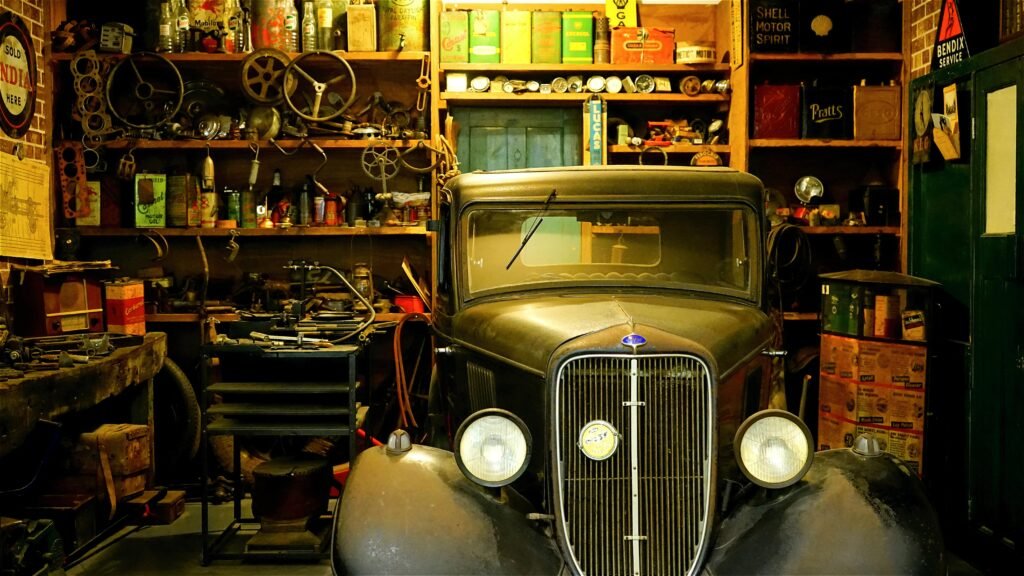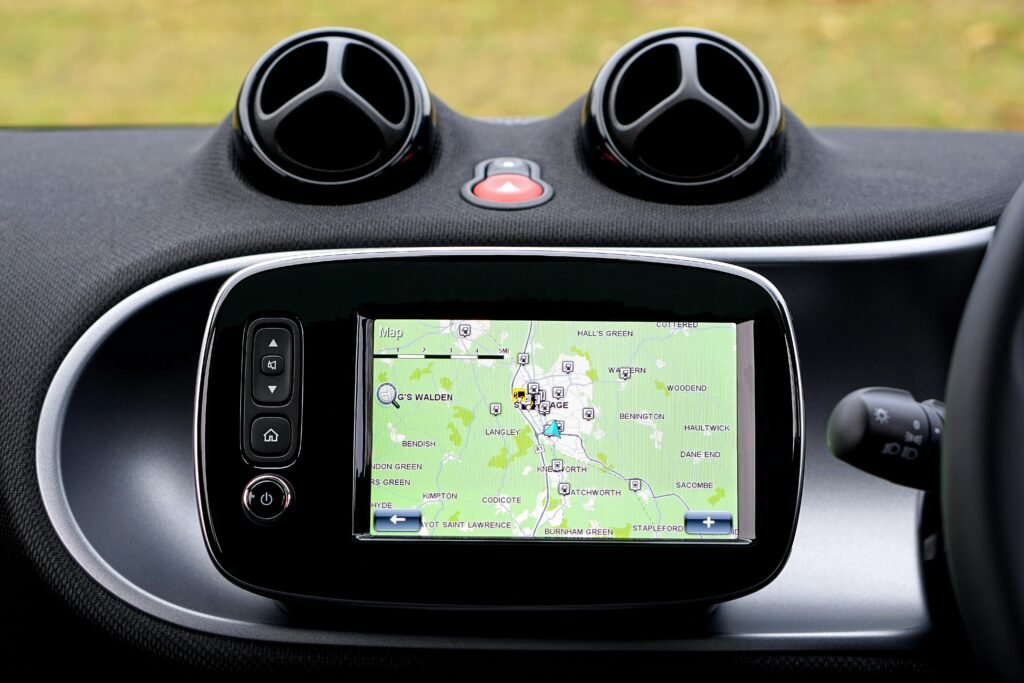Learning the Multiple Faces of Automotive
- AeroDrive Venture
- April 1, 2024
- Category : Automotive
Automobile
Very common and interesting hot topic these days is about cars and car related topics. People from all kinds of ages like cars. Boys dream of getting a job, buying a car and riding it. Actually, the term ‘car’ is synonymous with ‘automobile’ both referring to motor vehicles designed for transportation on roads.
Here, some essential keywords are given to understand more about automobiles.
What is an automobile?
A self-propelled vehicle on wheels, powered by an internal combustion engine, electric motor, or hybrid of both, used for transporting passengers or cargo on land. That means vehicles that can be moved by their own power, Without needing external assistance like being pulled or pushed and it has circular structures that rotate around an axle and provide support and direction for the vehicle. So, overall using an internal combustion engine or electric motor or hybrid of both to produce power, which is self-propelled and applies force on wheels to rotate and move on the vehicle for transporting passengers or cargo, is called an automobile. In general terms, it can be referred to as a car. The term “automotive” is commonly used to describe anything related to automobiles.

Basic and clear ideas about Automotive Engineering
The field of science and engineering concentrated on the creation, production, servicing, and design of automobiles. Actually, it is a combination of various fields of engineering, including materials, software, electrical, mechanical, and electronic engineering.
Automotive engineering is centered on mechanical engineering, which is concerned with designing and analyzing the mechanical parts of cars, like the suspension, brakes, engines, and gearboxes. The primary and most significant work of creating and bringing an automobile to life is handled by this section.
Electrical engineering branch oversees creating and designing the electrical systems used in cars, including the powertrain control system, lighting system, and ignition system. This section helps make an automobile appear more visually appealing.
Electronic engineering field designs and develops the microcontrollers, actuators, and sensors that go into automobiles. This division plays a major role in managing the car’s multiple roles.
The design and development of the software that manages the several electronic systems in cars is the responsibility of software engineers and all this under software engineering. In order to improve modern cars’ performance, safety, comfort, connectivity, and autonomy, software systems are essential. Voice command and touchscreen interfaces are two examples.
Engineering of materials is essential to creating cars that are secure, effective, comfortable, and environmentally friendly. Innovation and progress in vehicle design and manufacture are driven by advances in materials science and engineering. For example, using carbon fiber in automobiles can improve their strength, performance, efficiency, flexibility in design, durability, and environmental sustainability.
Designing cars that are safe for both occupants and pedestrians is the responsibility of safety engineers. Additionally, they provide safety features like seatbelts and airbags.
Automotive Driving
The skill and practice of operating a car or automobile, including aspects related to driving techniques, traffic awareness, and traffic rules.

- Vehicle Operation: It is actually the driving techniques, mastering the controls of a vehicle, including steering, acceleration, braking, and gear shifting, is fundamental to automotive driving. Understanding the dynamics of vehicle handling and responsiveness is essential for safe and efficient operation.
- Traffic Awareness: Navigating through traffic requires keen awareness of surrounding vehicles, pedestrians, and road conditions. Drivers must anticipate and react to changing traffic patterns, signals, and hazards to ensure smooth and safe travel.
- Traffic Rules and Regulations: Adhering to traffic laws, road signs, and speed limits is crucial for maintaining order and safety on the road. Understanding right-of-way rules, signaling conventions, and parking regulations is essential for responsible automotive driving.
Automotive Industry
The automotive industry refers to the sector of the economy that encompasses the design, development, manufacturing, marketing, and sale of motor vehicles, including cars, trucks, buses, motorcycles, and other automobiles.

- Vehicle Manufacturing: This involves the production of vehicles, including assembly line operations, quality control, and supply chain management.
Research and Development: The automotive industry invests heavily in research and development (R&D) to innovate and improve vehicle design, performance, safety, and efficiency. - Supply Chain Management: The automotive supply chain is highly complex, involving thousands of suppliers that provide components, parts, and materials for vehicle production.
- Marketing and Sales: Automakers engage in extensive marketing and advertising campaigns to promote their vehicles and attract customers. Sales operations encompass dealer networks, online sales channels, and other distribution channels to reach consumers around the world.
- Aftermarket Services: The automotive industry includes a range of aftermarket services, such as vehicle maintenance, repair, and customization. Independent repair shops, dealerships, and service centers provide maintenance and repair services to keep vehicles running smoothly.
- Regulatory Compliance: Automakers must comply with a wide range of regulations and standards governing vehicle safety, emissions, fuel efficiency, and other aspects of vehicle design and operation.
- Emerging Technologies: The automotive industry is at the forefront of technological innovation, with developments in areas such as electric vehicles (EVs), autonomous driving, connected vehicles, and mobility services.
Automotive Technology and Mobility
Automotive technology and mobility cover everything about cars and how people get around. It’s not just about making cars faster or safer, but also about finding better ways for people to travel without owning a car. Automotive technology covers the development and application of various technological improvements within vehicles to increase performance, safety, efficiency, and connectivity. Mobility solutions aim to offer better, eco-friendly transportation choices beyond just owning a car. They tackle transportation problems and make getting around easier for everyone.

- Vehicle Technology: This part is all about making cars better. That means things like making cars run on electricity, helping them drive themselves, and adding features like better safety systems and cool gadgets inside.
- Transportation Infrastructure: Here, we’re talking about the roads and other things that help people move around. It’s about making sure roads are in good shape, adding things like bike lanes and paths for walking, and using technology to make traffic flow better.
- Shared Mobility Services: These are services where you don’t have to own a car to get around. You can use apps to get a ride, share a car with others, or even rent a bike or scooter for a short trip.
- Public Transit: This is all about buses, trains, and other ways people travel together. It’s important for cities to have good public transportation so everyone can get where they need to go easily.
- Active Transportation: This is about getting around without using a car. It includes walking, biking, or even skating to places instead of driving. It’s good for the environment and keeps people healthy.
- Smart Mobility Solutions: This is about using technology to make transportation better. It includes things like apps that help you find the best way to get somewhere, systems that predict when buses or trains will arrive, and even ways to fix roads before they get too bad.
- Environmental Sustainability: Finally, this is about making sure our transportation choices don’t harm the planet. It’s about using clean energy for cars, encouraging people to bike or walk more, and finding ways to make transportation more eco-friendly overall.
Automotive Design
The process of creating the appearance and functionality of vehicles, involving aspects such as aesthetics, ergonomics, and aerodynamics. Automotive design is a creative and collaborative process that blends artistry with engineering principles to create vehicles that are not only visually appealing but also functional, safe, and enjoyable to drive. It plays a crucial role in shaping the success and reputation of automotive brands and influencing consumer perceptions and preferences.

- Exterior Design: This involves shaping the external appearance of the vehicle, including its body contours, proportions, lines, and surface treatments. Exterior design aims to create a visually striking and aerodynamically efficient vehicle that reflects the brand’s identity and resonates with consumers.
- Interior Design: Interior design focuses on the layout, materials, colors, and features of the vehicle’s cabin space. It includes designing the dashboard, seating arrangements, controls, infotainment systems, and storage compartments to optimize comfort, convenience, and usability for occupants.
- Human Factors and comfort: Human factors and comfort considerations play a crucial role in automotive design, ensuring that the vehicle’s controls, displays, and seating arrangements are intuitive and comfortable for drivers and passengers of varying sizes and abilities.
- Safety Features: Automotive design incorporates safety features to protect occupants in the event of a collision or accident. This includes designing the vehicle’s structure to withstand impact forces, incorporating crumple zones, and integrating safety systems such as airbags, seat belts, and advanced driver assistance systems (ADAS).
- Brand Identity and Market Trends: Automotive design reflects the brand identity and market trends of the automaker, as well as consumer preferences and cultural influences. Designers strive to create vehicles that stand out in the marketplace, evoke emotion, and resonate with target demographics.
Automotive Manufacturing
The process of producing automobiles, involving assembly lines, quality control, and supply chain management. It is a complex and highly organized process that requires coordination and collaboration across multiple disciplines and stakeholders. By leveraging advanced technologies, efficient processes, and continuous improvement practices, automotive manufacturers strive to produce high-quality vehicles that meet customer expectations and regulatory requirements while remaining competitive in the global marketplace.

- Design and Engineering: The automotive manufacturing process begins with the design and engineering of vehicles. Designers and engineers work together to develop vehicle concepts, create detailed designs, and optimize vehicle components and systems for performance, safety, and manufacturability.
- Prototyping and Testing: Before mass production begins, prototypes of vehicles are typically built and tested to validate design concepts, assess performance, and identify any issues or improvements needed. Prototyping and testing may involve physical prototypes, computer simulations, and virtual testing to evaluate vehicle dynamics, safety features, and durability.
- Supply Chain Management: Automotive manufacturing relies on a global network of suppliers that provide components, parts, and materials for vehicle production. Effective supply chain management is crucial for ensuring the timely and cost-effective delivery of parts to manufacturing facilities while maintaining quality standards and minimizing inventory costs.
- Manufacturing Processes: The actual production of vehicles involves various manufacturing processes, including stamping, welding, casting, machining, painting, and assembly. These processes may be carried out in specialized facilities, such as stamping plants, body shops, paint shops, and final assembly plants, each optimized for specific tasks.
- Quality Control and Assurance: Throughout the manufacturing process, rigorous quality control and assurance measures are implemented to ensure that vehicles meet strict quality standards and regulatory requirements. This includes inspection and testing of components and assemblies at each stage of production, as well as final vehicle inspection before shipment to dealerships.
- Lean Manufacturing and Continuous Improvement: Automotive manufacturers employ lean manufacturing principles and continuous improvement methodologies to optimize efficiency, minimize waste, and enhance productivity. This may involve streamlining production processes, implementing just-in-time inventory systems, and empowering employees to identify and address inefficiencies.
- Logistics and Distribution: Once vehicles are manufactured, they are transported to distribution centers and then shipped to dealerships or directly to customers. Logistics and distribution operations involve coordinating transportation networks, managing inventory, and ensuring timely delivery to meet customer demand.
Automotive Safety
Ensuring the safety of people in cars, on foot, and using the roads involves various measures and technologies. It’s a combined effort of car makers, regulators, policymakers, road authorities, and drivers.

- Vehicle Design and Build: It starts with how cars are designed and made to handle crashes and protect people inside. This includes strong structures, special areas to absorb impact, and safety features like airbags.
- Passive Safety Systems: These are features that kick in during a crash to protect people. Think seat belts, airbags (ones that cover the front, sides, and windows), headrests, and special seats for kids. They help reduce injuries by spreading out the force of a crash.
- Active Safety Systems: These are like helpers that work to prevent crashes or make them less severe. They include things like anti-lock brakes (to stop skidding), stability control (to keep a car from spinning out), and sensors that can warn drivers about dangers like getting too close to another car or drifting out of their lane.
- Lights and Visibility: Good lighting and being seen by other drivers are key to safety. Headlights, taillights, turn signals, and fog lights all help drivers see and be seen, especially in bad weather or when it’s dark.
- Roads and Signs: Safe roads and clear signs are crucial for preventing accidents. Roads need to be well-designed, with clear signs and signals to guide drivers and prevent confusion.
- Driver Education and Behavior: Knowing how to drive safely and following the rules of the road are super important. Driver education programs, getting a driver’s license, and ongoing training help teach safe driving habits and reduce risky behaviors like speeding or using a phone while driving.
- Rules and Standards: Governments set rules and standards to make sure vehicles meet minimum safety requirements. These include things like crash tests, emissions standards, and rules about how cars should be built to protect people inside. Following these rules is a must for car makers to sell their vehicles.
Automotive Maintenance and Repair
Taking care of your car to keep it running well involves various tasks and services. Car maintenance and repair services are vital for keeping your vehicle safe, reliable, and enjoyable to drive for a long time.

- Regular Maintenance: This includes scheduled check-ups and tasks to keep everything running smoothly. Tasks like changing oil, checking and replacing fluids (like coolant and brake fluid), changing filters (for oil and air), rotating tires, and inspecting belts and hoses are all part of routine maintenance.
- Preventive Maintenance: The goal here is to catch problems before they become big issues. This might involve checking and replacing the battery, inspecting brakes, steering, and suspension, and tuning up the engine to keep it working efficiently.
- Finding Problems: When your car has issues, diagnostic services help figure out what’s wrong. Mechanics use special tools and tests to scan the computer, check sensors, and visually inspect parts to find mechanical, electrical, or electronic faults.
- Fixing Things: Repair services are about fixing or changing parts to get your car back in good shape. This could involve fixing the engine, transmission, brakes, steering and suspension, electrical systems, heating and air conditioning, exhaust systems, and more.
- After a Crash: If you’re in an accident, collision repair services can help fix the damage. This could mean repairing or swapping out damaged body panels, frames, or other parts, and then refinishing and painting to match the rest of your car.
- Keeping Track: It’s important to keep a record of when your car gets serviced and what was done. This helps make sure your car gets the right services at the right times. Following the car maker’s recommended schedule and keeping detailed records of each service and repair is key.
Automotive Fuel and Propulsion
The study of different fuels and propulsion systems used in automobiles, including internal combustion engines, electric motors, and alternative fuels. Automotive fuel and propulsion technologies are evolving rapidly as the industry seeks to improve efficiency, reduce emissions, and transition toward more sustainable transportation solutions.
Fuel Types:
- Gasoline: Gasoline, also known as petrol, has been the primary fuel source for internal combustion engine vehicles for over a century. It is widely available and provides high energy density, making it suitable for powering cars, trucks, and motorcycles.
- Diesel: Diesel fuel is commonly used in diesel engines, which are known for their efficiency and torque. Diesel vehicles typically offer better fuel economy than gasoline vehicles, especially for long-distance driving and heavy-duty applications.
- Electricity: Electric vehicles (EVs) use electricity stored in batteries to power electric motors and propel the vehicle. EVs produce zero tailpipe emissions and offer quiet and smooth operation, making them popular choices for environmentally conscious consumers.
- Hybrid: Hybrid vehicles combine an internal combustion engine with an electric motor and battery pack. They can operate using gasoline, electricity, or a combination of both, depending on driving conditions and vehicle design. Hybrid vehicles offer improved fuel efficiency and reduced emissions compared to conventional gasoline vehicles.

- Hydrogen: Hydrogen fuel cell vehicles use hydrogen gas stored in onboard tanks to generate electricity through a chemical reaction with oxygen in the air. This electricity powers electric motors to propel the vehicle, emitting only water vapor as a byproduct. Hydrogen fuel cell vehicles offer fast refueling times and long driving ranges, with the potential for zero emissions when hydrogen is produced using renewable energy sources.
Propulsion Systems:
- Internal Combustion Engine (ICE): Internal combustion engines burn fuel (such as gasoline or diesel) within cylinders to generate power. They are the most common propulsion system for vehicles worldwide, with various configurations including gasoline engines, diesel engines, and turbocharged engines.
- Electric Motor: Electric motors use electricity to generate rotational motion and propel the vehicle. They are commonly used in electric and hybrid vehicles, providing instant torque and smooth acceleration without the need for gears or transmissions.
- Fuel Cell: Fuel cell propulsion systems use hydrogen gas to generate electricity through an electrochemical process. This electricity powers electric motors to drive the vehicle. Fuel cell vehicles offer the potential for zero emissions and long driving ranges, making them promising alternatives to traditional internal combustion engine vehicles.
Automotive Marketing

Explore the strategies and techniques used by automotive companies to promote their products and services, including advertising campaigns, brand positioning, digital marketing, and customer relationship management. That means how car companies tell people about their cars. They use ads on TV, online, and social media to show what makes their cars special. They also use websites and emails to talk to customers and make them happy.
Automotive Aftermarket
Discuss the market for automotive parts, accessories, and services beyond the original equipment manufacturer (OEM), including aftermarket parts suppliers, independent repair shops, and customization services. That means the aftermarket is where you go if you want to fix or change your car after you buy it. You can get new parts, like brakes or tires, that aren’t made by the car company. There are also places where you can get your car fixed without going to the dealer.
Automotive Insurance

Examine the types of insurance coverage available for vehicles, including liability insurance, collision coverage, comprehensive coverage, and specialized policies for classic cars, high-performance vehicles, and commercial fleets.That means car insurance is like a safety net for your car. It helps pay if your car gets damaged or if you get hurt in a crash. There are different kinds of car insurance, like one that helps if you hit someone else, or one that helps if something bad happens to your car.
Automotive Events

Car events are exciting gatherings for car lovers where they can experience the latest innovations in the automotive industry. Auto shows and trade fairs serve as platforms for car manufacturers to show new vehicle models and showcase cutting-edge technologies to the public. These events allow attendees to get up close and personal with the newest cars on the market and learn about industry trends.
Additionally, motorsport competitions, such as races and rallies, provide thrilling entertainment as drivers compete head-to-head, pushing the limits of performance and engineering. These events not only offer excitement but also serve as testing grounds for technological advancements that eventually trickle down to consumer vehicles. Overall, automotive events are both educational and enjoyable experiences for anyone with a passion for cars.
